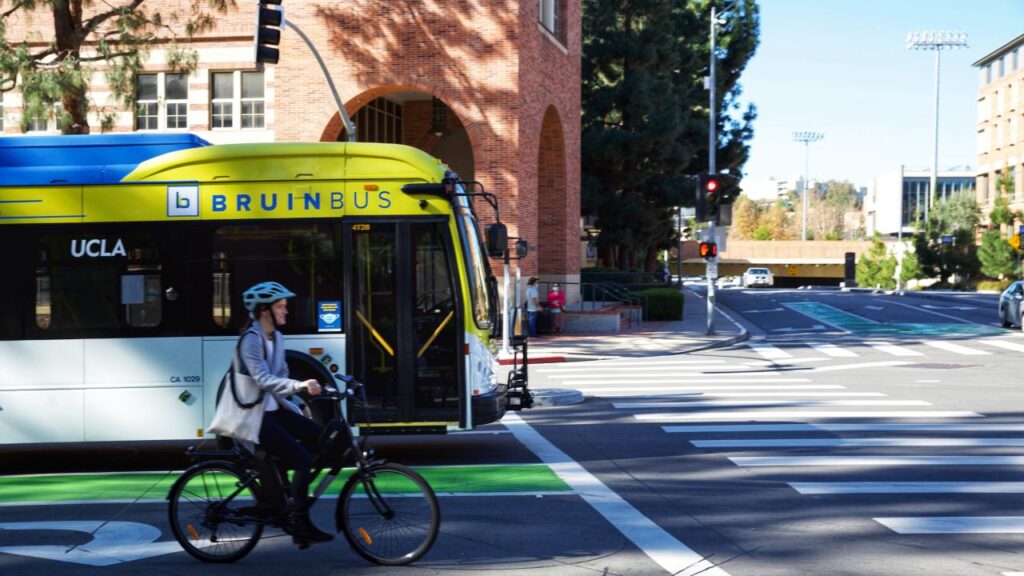This article discusses the importance of considering the environmental impact when choosing modes of transportation. Air travel is highlighted as a carbon-intensive form of transportation that contributes to climate change and air pollution. It suggests considering alternatives for shorter distances or choosing fuel-efficient airlines to reduce the environmental impact of flying. Driving is also identified as a significant source of carbon emissions, and fuel-efficient vehicles, carpooling, and public transportation are suggested as ways to reduce the impact of driving. Public transportation is praised for reducing carbon emissions and traffic congestion. Cycling and walking are promoted as healthy and eco-friendly alternatives for shorter distances. The article concludes by emphasizing the need for conscious decisions to reduce carbon emissions, air pollution, and negative environmental effects.
Choosing Your Transportation Wisely: How Travel Choices Affect the Environment
Introduction
Traveling is a wonderful experience that allows us to explore new places, learn about different cultures, and create unforgettable memories. However, it’s important to consider the environmental impact of our travel choices. The transportation methods we choose can greatly affect the environment, contributing to air pollution, carbon emissions, and other negative effects on our planet. In this article, we will explore how different modes of transportation impact the environment and provide tips on making more eco-friendly travel choices.
The Environmental Impact of Air Travel
Air travel is one of the most carbon-intensive forms of transportation. Commercial airplanes emit large amounts of greenhouse gases, contributing to climate change. The carbon emissions from air travel can have a lasting impact on the environment, significantly increasing the carbon footprint of a single trip. Additionally, airplanes release other pollutants like nitrogen oxides and particulate matter, further contributing to air pollution. While it may not be possible to completely avoid air travel, considering alternatives for shorter distances or choosing more fuel-efficient airlines can help reduce the environmental impact of flying.
Driving and the Carbon Footprint
Driving a personal vehicle is a convenient mode of transportation, but it also has a significant impact on the environment. Car emissions contribute to air pollution and are a major source of carbon emissions. The fuel efficiency of the vehicle, the distance traveled, and the driving style all play a role in determining the carbon footprint of a journey. Choosing fuel-efficient vehicles, carpooling, or opting for public transportation are effective ways to reduce the environmental impact of driving.
Public Transportation
Public transportation plays a vital role in sustainable travel. Buses, trains, and trams typically carry a large number of people, reducing the number of individual vehicles on the road. This leads to fewer carbon emissions and less traffic congestion. Additionally, public transportation networks are increasingly adopting greener technologies, such as electric buses and trains powered by renewable energy sources. Utilizing public transportation not only reduces the environmental impact but also promotes the development of sustainable urban mobility systems.
Cycling and Walking
Cycling and walking are not only healthy ways to travel but also incredibly eco-friendly. These modes of transportation have zero carbon emissions and do not contribute to air pollution. By opting to cycle or walk for shorter distances, you can significantly reduce your carbon footprint and enjoy the benefits of physical activity. Many cities are investing in cycling infrastructure, including bike lanes and bike-sharing programs, to encourage these sustainable travel options.
Choosing Travel Alternatives
When planning your travels, it’s worth exploring alternative options that minimize environmental impact. Consider taking trains instead of planes for shorter distances or opt for direct flights that minimize carbon emissions associated with takeoff and landing. If driving is unavoidable, plan your routes efficiently to minimize mileage and use eco-friendly navigation apps that consider emission reduction. Also, research hotels that prioritize sustainability and have implemented eco-friendly practices. By choosing accommodations with green certifications, you can contribute to reducing the environmental impact of your stay.
Conclusion
As travelers, it’s our responsibility to make conscious decisions that consider the impact on the environment. By choosing our transportation wisely, we can help reduce carbon emissions, air pollution, and other negative effects caused by excessive travel. Whether it’s opting for public transportation, cycling, or making more informed choices when flying or driving, every small step counts towards a more sustainable future. Let’s choose wisely and travel in ways that preserve the beauty of our planet for future generations to enjoy.
